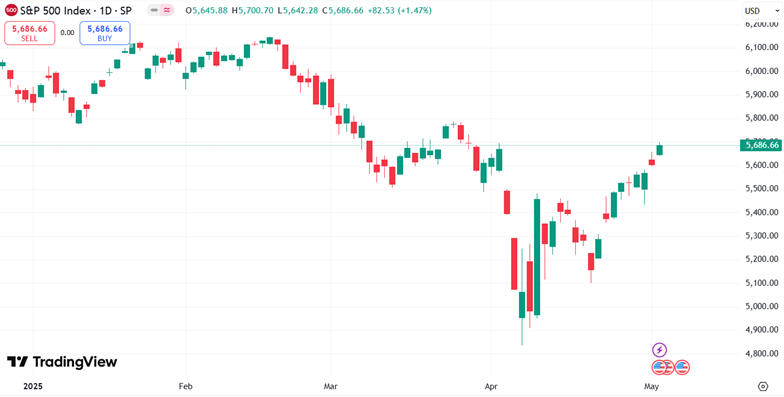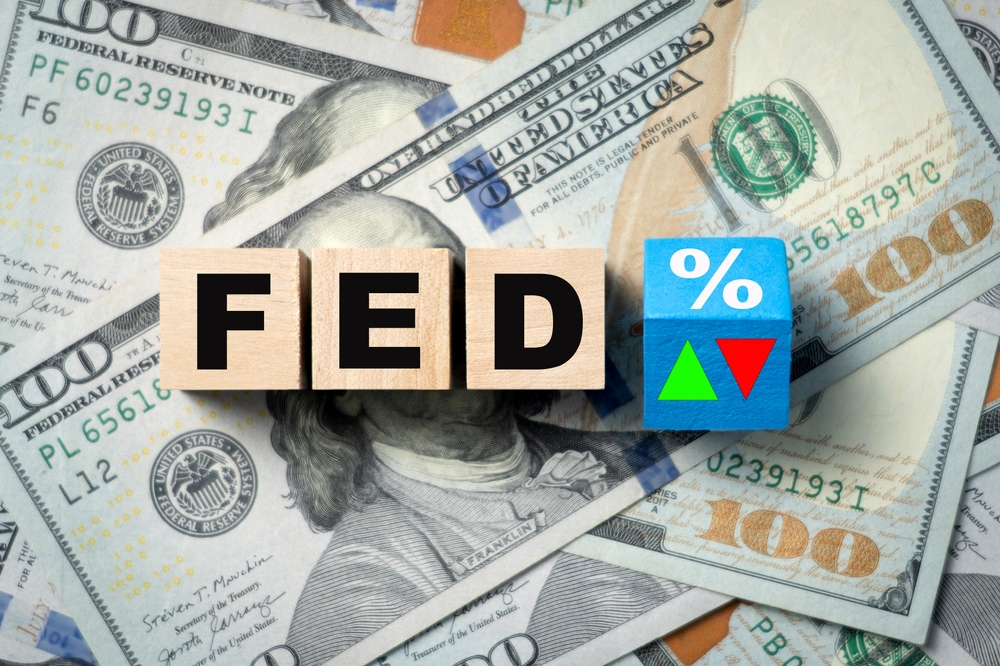
How Trump shook the markets
April 2025 showed just how quickly markets can plunge because of policy decisions and how quickly they can react when a glimmer of hope emerges. President Trump's new tariffs were the main cause of nervousness, but the corporate earnings season and the temporary postponement of the tariffs reduced tensions and brought markets to a minor upswing.
The shock of Trump's policies
April 2025 was a particularly volatile month for financial markets. Investors had to face tensions over US tariffs unexpectedly unveiled by President Donald Trump. Already on 2 April, he announced a series of so-called "reciprocal" tariffs of 10% on all imports and, for example, 34% on Chinese goods, 25% on cars and 20% on European goods. The markets immediately reacted with a sell-off: the S&P 500 index fell by 15% in a few days, the most since March 2020.
China responded with retaliatory tariffs, while the rest of the world tried to convince the US President diplomatically. As a result, a wave of nervousness swept the markets, which carried through the whole month. It looks like it was a diplomatic effort that caused a turning point in the whole development. This came on 9 April, when Trump announced a 90-day suspension of part of the tariffs. Although this deferral did not apply to China (on the contrary, tariffs on Chinese goods were increased to 145%), the market reacted with a sharp rise. The S&P 500 had its best day since 2008 when it rose 10%.*
Later, there were also signs of reassurance as Trump announced that tariffs against China would be substantially reduced and negotiations with India and Japan progressed. All this helped US stocks to erase some of their losses towards the end of the month, although no real progress was made. For the time being, however, the market was content with these statements.*

Source: TradingView
The economy as the first casualty of the trade war
Macroeconomic indicators have become the first casualty of the trade war. The first estimate of GDP for the first quarter showed a decline in the US economy. This was due to frontloading before the tariffs were imposed, i.e. increased imports and lower government spending.
At the same time, consumer confidence fell to its lowest level since the spring of 2020. Investment banks were also reassessing their forecasts, with Goldman Sachs, for example, raising the probability of a recession to 45%, but later lowering it again after Trump's postponement of the tariffs. On the other hand, retail sales (especially in the car sector) jumped.
Corporate results improved sentiment
After the postponement of the tariffs, a second positive signal came in the form of a positive earnings season. As many as 76% of companies in the S&P 500 index beat earnings estimates, above the 10-year average. The communications, health care and technology sectors surprised the most. Revenues also grew, up 3.8% overall, marking the 18th consecutive quarter of year-on-year earnings growth for firms in the US main index.
The main news, however, remains the leveling off of the huge drop from earlier in the month. Going forward, tariffs remain as potentially the biggest problem, but strong corporate results and early signs of diplomatic movement bring some hope to markets. Investors and markets have shown that they can stand on their own two feet even under such pressure.
* Past performance is no guarantee of future results




